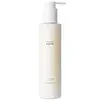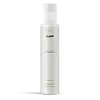What's inside
What's inside
 Key Ingredients
Key Ingredients

 Benefits
Benefits

 Concerns
Concerns

 Ingredients Side-by-side
Ingredients Side-by-side

Citrus Junos Peel Water 62.6%
Skin ConditioningMacadamia Ternifolia Seed Oil
EmollientWater
Skin ConditioningLauryl Glucoside
CleansingGlycerin
HumectantIsoamyl Laurate
EmollientCetearyl Alcohol
EmollientHydrogenated Vegetable Oil
EmollientCetearyl Olivate
Polyglyceryl-10 Oleate
Skin ConditioningGlyceryl Stearate Citrate
EmollientSorbitan Olivate
EmulsifyingAloe Barbadensis Leaf Extract
EmollientBioflavonoids
Skin ConditioningBrassica Oleracea Italica Extract
AstringentPropanediol
SolventAllantoin
Skin ConditioningTocopherol
AntioxidantScutellaria Baicalensis Root Extract
AstringentUlmus Davidiana Root Extract
Skin ConditioningGlycyrrhiza Glabra Root Extract
BleachingXanthan Gum
EmulsifyingCitric Acid
BufferingArginine
MaskingP-Anisic Acid
MaskingCitrus Junos Peel Water 62.6%, Macadamia Ternifolia Seed Oil, Water, Lauryl Glucoside, Glycerin, Isoamyl Laurate, Cetearyl Alcohol, Hydrogenated Vegetable Oil, Cetearyl Olivate, Polyglyceryl-10 Oleate, Glyceryl Stearate Citrate, Sorbitan Olivate, Aloe Barbadensis Leaf Extract, Bioflavonoids, Brassica Oleracea Italica Extract, Propanediol, Allantoin, Tocopherol, Scutellaria Baicalensis Root Extract, Ulmus Davidiana Root Extract, Glycyrrhiza Glabra Root Extract, Xanthan Gum, Citric Acid, Arginine, P-Anisic Acid
Water
Skin ConditioningGlycerin
HumectantEthylhexyl Stearate
EmollientHelianthus Annuus Seed Oil
EmollientGlyceryl Stearate Citrate
EmollientCetearyl Alcohol
EmollientPentylene Glycol
Skin ConditioningMyristyl Myristate
EmollientPrunus Amygdalus Dulcis Oil
Skin ConditioningPropanediol
SolventPanthenol
Skin ConditioningAllantoin
Skin ConditioningXanthan Gum
EmulsifyingSodium Stearoyl Glutamate
CleansingArgania Spinosa Kernel Oil
EmollientSodium Lactate
BufferingBisabolol
MaskingTetrasodium Glutamate Diacetate
Lactic Acid
BufferingTocopherol
AntioxidantEthylhexylglycerin
Skin ConditioningAloe Barbadensis Leaf Extract
EmollientSodium Carboxymethyl Beta-Glucan
CleansingMagnesium Chloride
Alcohol
AntimicrobialBioflavonoids
Skin ConditioningBrassica Oleracea Italica Seed Oil
EmollientCitric Acid
BufferingSodium Hydroxide
BufferingPhenoxyethanol
PreservativePotassium Sorbate
PreservativeWater, Glycerin, Ethylhexyl Stearate, Helianthus Annuus Seed Oil, Glyceryl Stearate Citrate, Cetearyl Alcohol, Pentylene Glycol, Myristyl Myristate, Prunus Amygdalus Dulcis Oil, Propanediol, Panthenol, Allantoin, Xanthan Gum, Sodium Stearoyl Glutamate, Argania Spinosa Kernel Oil, Sodium Lactate, Bisabolol, Tetrasodium Glutamate Diacetate, Lactic Acid, Tocopherol, Ethylhexylglycerin, Aloe Barbadensis Leaf Extract, Sodium Carboxymethyl Beta-Glucan, Magnesium Chloride, Alcohol, Bioflavonoids, Brassica Oleracea Italica Seed Oil, Citric Acid, Sodium Hydroxide, Phenoxyethanol, Potassium Sorbate
 Reviews
Reviews

Ingredients Explained
These ingredients are found in both products.
Ingredients higher up in an ingredient list are typically present in a larger amount.
Allantoin is a soothing ingredient known for its protective and moisturizingg properties. Because of this, it is often added to products with strong active ingredients.
Studies show higher concentrations of this ingredient can promote wound healing.
Though it can be derived from the comfrey plant, allantoin is produced synthetically for cosmetic products to ensure purity.
Learn more about AllantoinAloe Barbadensis Leaf Extract is an extract of the leaves of the aloe, Aloe barbadensis, Liliaceae.
Aloe is one of the most well-known natural soothing ingredients, and for good reason. It’s full of water and has a cooling, calming effect on the skin, especially when it’s sunburned, itchy, or irritated. Aloe also helps your skin stay hydrated and smooth by mimicking what healthy skin naturally produces. On top of that, it contains vitamins and nutrients that support skin recovery.
It doesn’t protect you from the sun, but it can help your skin bounce back after too much time in it.
Let’s get into the details:
Aloe contains antioxidant Vitamins A, C, and E, which help fight off free radicals (unstable molecules from things like pollution that can damage your skin).
It’s also rich in polysaccharides, which are natural sugars that help hydrate the skin by acting like the skin’s own moisturizing agents. These, along with other sugars like monosaccharides, help form a protective barrier that locks in moisture.
Aloe works as both a humectant and an emollient. That means it draws water into the skin (humectant) and helps trap it there (emollient), making it an effective natural moisturizer.
You’ll also find a mix of other skin-supporting ingredients in aloe, including folic acid, choline, calcium, amino acids, fatty acids, and even Vitamin B12.
Out of the 420+ species of aloe, Aloe barbadensis is the most widely used in skincare products thanks to its gentle yet effective properties.
There are over 420 species of aloe but Aloe Barbadensis is the most commonly used for topical products.
Learn more about Aloe Barbadensis Leaf ExtractBioflavonoids are secondary metabolites found in plants. They contain antioxidants.
Antioxidants help fight free-radicals. Free-radicals are molecules that may damage your skin cells, such as pollution.
Foods containing high amounts of bioflavonoids include celery, peppers, berries, grapes, citrus fruits, cocoa, and more.
Learn more about BioflavonoidsCetearyl alcohol is a mixture of two fatty alcohols: cetyl alcohol and stearyl alcohol. It is mainly used as an emulsifier. Emulsifiers help prevent the separation of oils and products. Due to its composition, it can also be used to thicken a product or help create foam.
Cetearyl alcohol is an emollient. Emollients help soothe and hydrate the skin by trapping moisture.
Studies show Cetearyl alcohol is non-toxic and non-irritating. The FDA allows products labeled "alcohol-free" to have fatty alcohols.
This ingredient is usually derived from plant oils such as palm, vegetable, or coconut oils. There is debate on whether this ingredient will cause acne.
Due to the fatty acid base, this ingredient may not be Malassezia folliculitis safe.
Learn more about Cetearyl AlcoholCitric Acid is an alpha hydroxy acid (AHA) naturally found in citrus fruits like oranges, lemons, and limes.
Like other AHAs, citric acid can exfoliate skin by breaking down the bonds that hold dead skin cells together. This helps reveal smoother and brighter skin underneath.
However, this exfoliating effect only happens at high concentrations (20%) which can be hard to find in cosmetic products.
Due to this, citric acid is usually included in small amounts as a pH adjuster. This helps keep products slightly more acidic and compatible with skin's natural pH.
In skincare formulas, citric acid can:
While it can provide some skin benefits, research shows lactic acid and glycolic acid are generally more effective and less irritating exfoliants.
Most citric acid used in skincare today is made by fermenting sugars (usually from molasses). This synthetic version is identical to the natural citrus form but easier to stabilize and use in formulations.
Read more about some other popular AHA's here:
Learn more about Citric AcidGlycerin is already naturally found in your skin. It helps moisturize and protect your skin.
A study from 2016 found glycerin to be more effective as a humectant than AHAs and hyaluronic acid.
As a humectant, it helps the skin stay hydrated by pulling moisture to your skin. The low molecular weight of glycerin allows it to pull moisture into the deeper layers of your skin.
Hydrated skin improves your skin barrier; Your skin barrier helps protect against irritants and bacteria.
Glycerin has also been found to have antimicrobial and antiviral properties. Due to these properties, glycerin is often used in wound and burn treatments.
In cosmetics, glycerin is usually derived from plants such as soybean or palm. However, it can also be sourced from animals, such as tallow or animal fat.
This ingredient is organic, colorless, odorless, and non-toxic.
Glycerin is the name for this ingredient in American English. British English uses Glycerol/Glycerine.
Learn more about GlycerinGlyceryl Stearate Citrate is a citric acid ester of glyceryl stearate.
It is an emulsifier, emollient, and a surfactant.
Emulsifiers help stabilize a product. It does this by preventing certain ingredients from separating. Common ingredients include oils and water, which do not mix naturally. Emulsifiers have properties that help keep ingredients such as these together.
Emollients help soothe and soften the skin. They do this by creating a protective film on your skin. This barrier helps trap moisture and keeps your skin hydrated. Emollients may be effective at treating dry or itchy skin.
Surfactants help gather oils, dirt, and other pollutants from the skin. This helps them to be easily rinsed away.
Learn more about Glyceryl Stearate CitratePropanediol is an all-star ingredient. It softens, hydrates, and smooths the skin.
It’s often used to:
Propanediol is not likely to cause sensitivity and considered safe to use. It is derived from corn or petroleum with a clear color and no scent.
Learn more about PropanediolTocopherol (also known as Vitamin E) is a common antioxidant used to help protect the skin from free-radicals and strengthen the skin barrier. It's also fat soluble - this means our skin is great at absorbing it.
Vitamin E also helps keep your natural skin lipids healthy. Your lipid skin barrier naturally consists of lipids, ceramides, and fatty acids. Vitamin E offers extra protection for your skin’s lipid barrier, keeping your skin healthy and nourished.
Another benefit is a bit of UV protection. Vitamin E helps reduce the damage caused by UVB rays. (It should not replace your sunscreen). Combining it with Vitamin C can decrease sunburned cells and hyperpigmentation after UV exposure.
You might have noticed Vitamin E + C often paired together. This is because it is great at stabilizing Vitamin C. Using the two together helps increase the effectiveness of both ingredients.
There are often claims that Vitamin E can reduce/prevent scarring, but these claims haven't been confirmed by scientific research.
Learn more about TocopherolWater. It's the most common cosmetic ingredient of all. You'll usually see it at the top of ingredient lists, meaning that it makes up the largest part of the product.
So why is it so popular? Water most often acts as a solvent - this means that it helps dissolve other ingredients into the formulation.
You'll also recognize water as that liquid we all need to stay alive. If you see this, drink a glass of water. Stay hydrated!
Learn more about WaterXanthan gum is used as a stabilizer and thickener within cosmetic products. It helps give products a sticky, thick feeling - preventing them from being too runny.
On the technical side of things, xanthan gum is a polysaccharide - a combination consisting of multiple sugar molecules bonded together.
Xanthan gum is a pretty common and great ingredient. It is a natural, non-toxic, non-irritating ingredient that is also commonly used in food products.
Learn more about Xanthan Gum